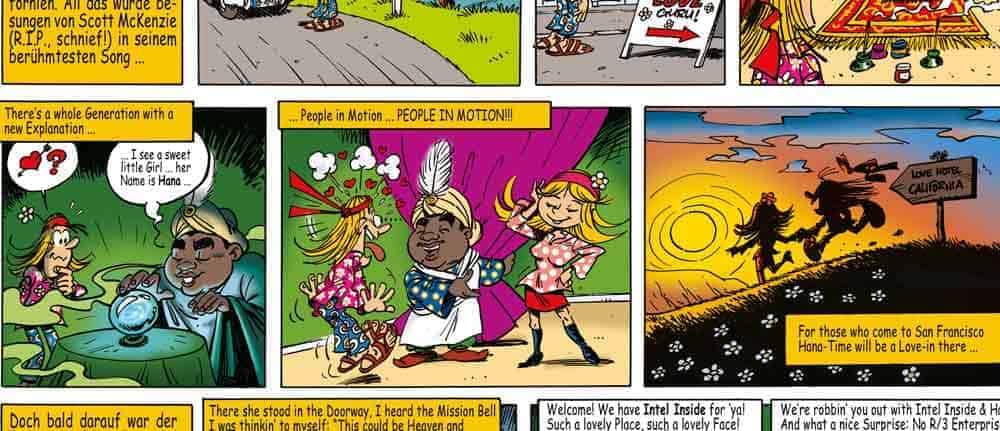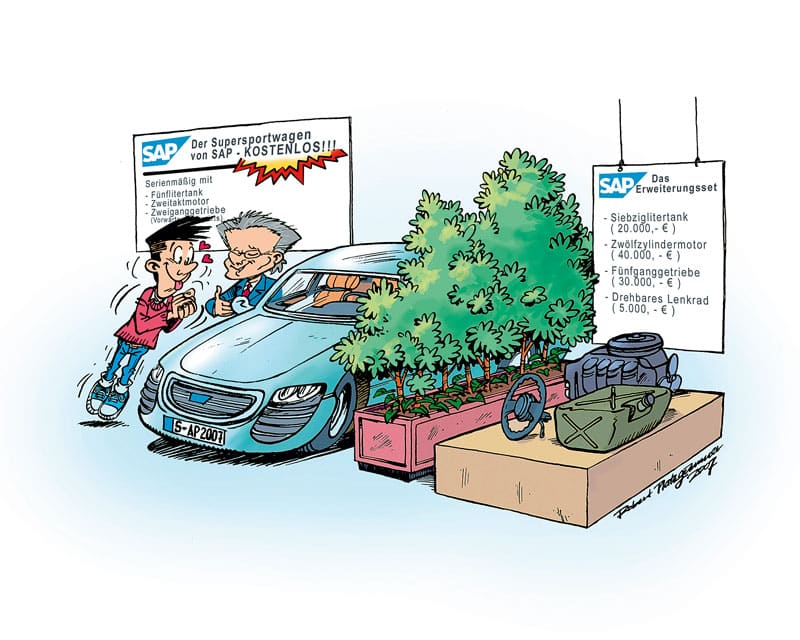And yet it moves


The classic SAP existing customer knows the challenges of a release upgrade and the SAP community knows the discussion about the added value of a release upgrade. Many projects are merely technical in nature so that the existing version does not fall out of maintenance.
In the past, however, the release change was often the impetus for the development of new business processes. For some years now, it has no longer been called business process reengineering, but digital transformation. Ultimately, it's about better orchestration, synchronization and efficiency of the ERP. For SAP's existing customers, it is an arduous journey - but SAP earns very well from it.
The many release upgrades are based on a simple trick: The standard performance of the software is continuously reduced, so that the existing customer has to purchase new add-on products with every upgrade in order to achieve the same range of functions as before the upgrade, see illustration. SAP earns well from this: Of course, the illustration is also a hidden allusion to SAP's very generous car policy. Nearly half of SAP employees in Germany drive a company car, there are no meetings on Fridays, and home offices are a matter of course. SAP earns very well. SAP is rich and can afford a lot.
This illustration, which is now more than ten years old, gives a brief insight into where the money comes from. Even during the reign of ex-SAP CEO Professor Henning Kagermann, shown here as an eloquent car salesman, existing customers had to dig deep into their wallets for every release change. The current situation is similar. The release change hurts, and yet the S/4 Hana installation figures are moving steadily upwards.
Many existing SAP customers currently have no choice. They have to move in the direction of S/4. The old ERP/ECC 6.0 system is coming off maintenance, and the new system is necessary in order not to lose touch with cloud computing. Against their better judgment, users are embarking on the S/4 path - similar to how the Italian mathematician, physicist and philosopher Galileo Galilei once recanted when he saw the torture instruments of the Inquisition. He renounced the heliocentric world view, also called the Copernican world view, and accepted the doctrine prescribed by the Catholic Church, the geocentric world view.
Many existing SAP customers are leaving the ECC path at this time, even though the SAP User Association established many years ago that a digital transformation can also succeed well with SAP Business Suite 7. Users still swear by S/4, even though it will be expensive. Options like Rise, Cloud and FUE cost a lot of money and time. SAP has secured the path until 2040. What comes after that, however, is in the dark.
Courageous existing customers are already starting to look for alternatives. Galileo Galilei also continued to believe in the heliocentric view of the world and later quietly said, "And yet it moves" - meaning the earth orbiting around the sun. SAP probably belongs to a dying IT age, and in many years the SAP community will also realize that the geocentric worldview, with SAP at the center of everything, is not necessarily correct.






